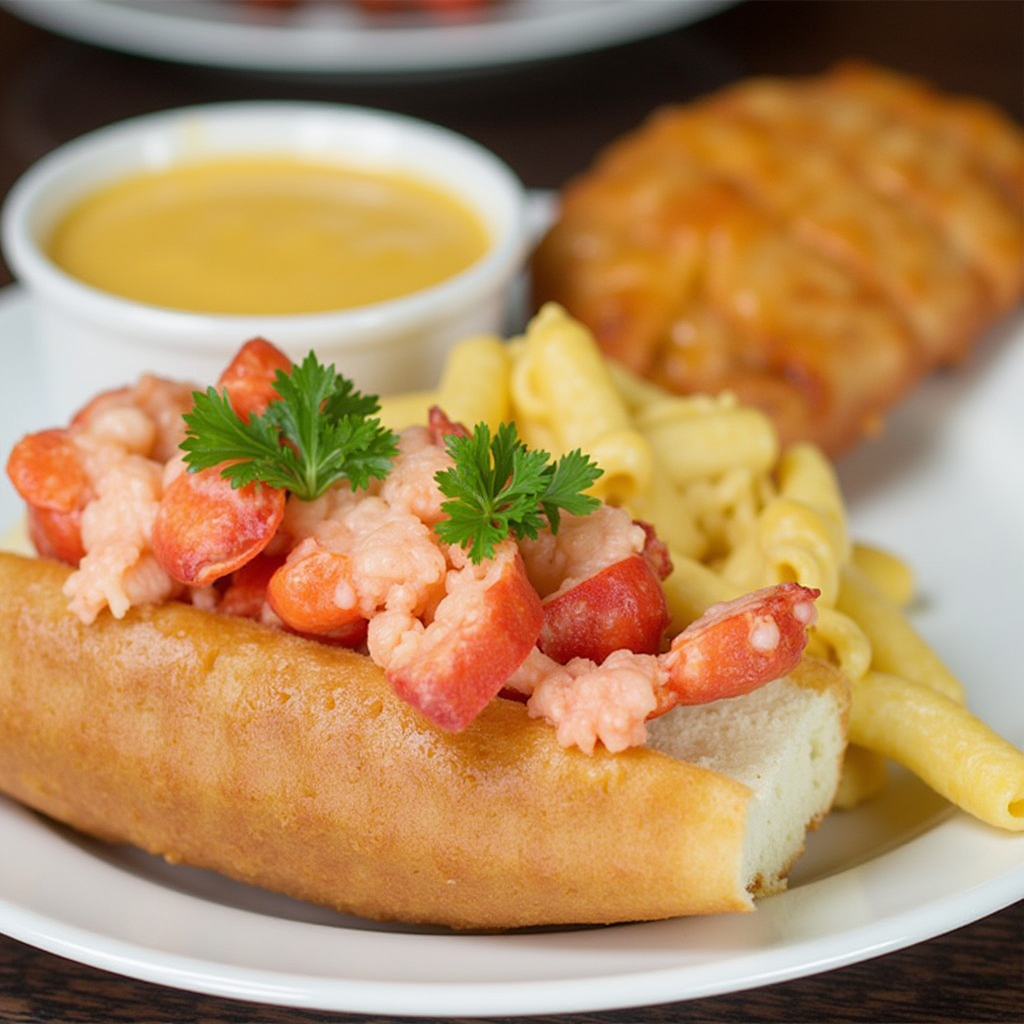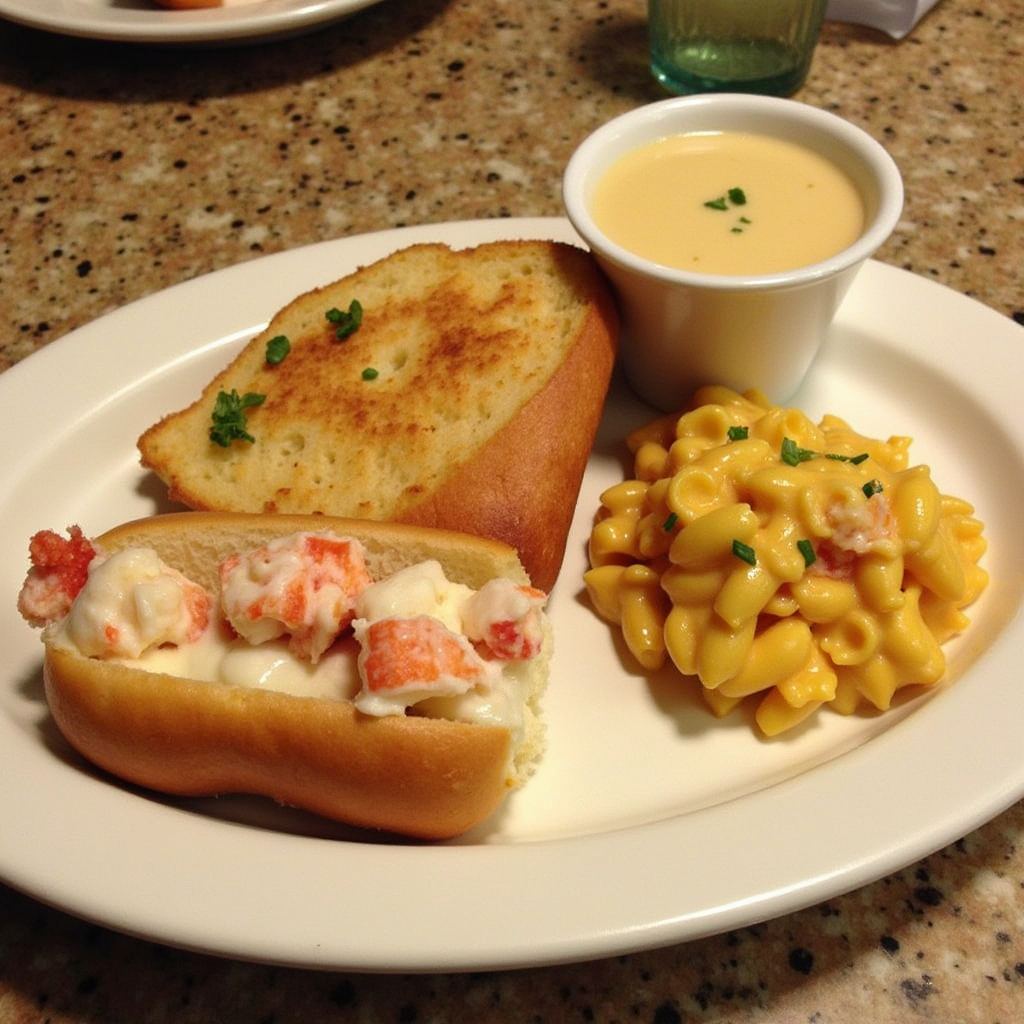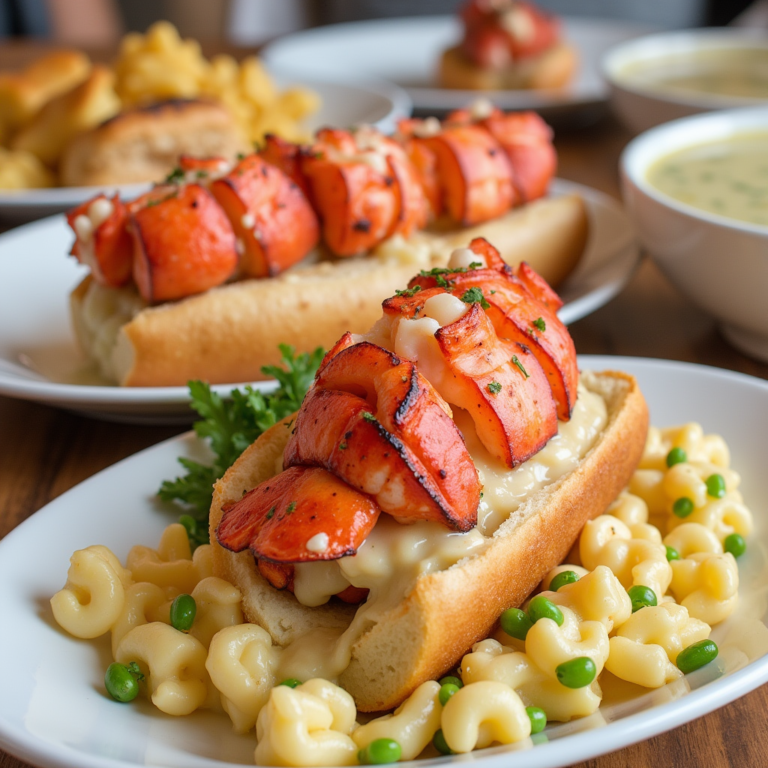Lobster meat is a culinary treasure, celebrated for its tender texture, sweet flavor, and versatility in the kitchen. Whether you’re preparing an elegant lobster bisque, a classic lobster roll, or a simple yet luxurious lobster tail with melted butter, this seafood delicacy never fails to impress. Beyond its exquisite taste, lobster meat is also a nutritious choice, making it a favorite among health-conscious food lovers. This guide delves into the nutritional benefits of lobster meat, the different types available, and tips for sourcing and cooking it to perfection.
Why Choose Lobster Meat?
Lobster meat is more than just a treat for the taste buds—it’s a nutrient-dense food that offers a range of health benefits. Its rich flavor and tender texture make it a standout ingredient in both simple and elaborate dishes, while its nutritional profile adds to its appeal. Here’s why lobster meat deserves a place on your plate:
- Protein-Rich: Lobster meat is an excellent source of high-quality protein, which is essential for muscle repair, growth, and overall satiety. A single serving provides a significant portion of your daily protein needs, making it a satisfying and nutritious option.
- Low in Fat: Despite its indulgent reputation, lobster meat is naturally low in fat, particularly saturated fat. This makes it a great choice for those looking to maintain a balanced diet without sacrificing flavor.
- Rich in Vitamins and Minerals: Lobster meat is packed with essential nutrients, including vitamin B12, zinc, and selenium. Vitamin B12 supports energy production and brain function, while zinc and selenium play key roles in immune health and antioxidant defense.
Types of Lobster Meat
Lobster meat varies depending on the part of the crustacean it comes from, each offering unique textures and flavors. Understanding these differences can help you choose the right type for your dish:
- Tail Meat: Known for its firm texture and rich flavor, lobster tail meat is ideal for grilling, baking, or broiling. Its impressive presentation makes it a popular choice for special occasions and fine dining.
- Claw Meat: Claw meat is prized for its sweetness and tenderness. It’s perfect for dishes where a softer texture is desired, such as salads, soups, or lobster rolls. Its delicate flavor pairs well with light sauces and fresh herbs.
- Knuckle Meat: Often overlooked, knuckle meat is delicate and versatile. It’s commonly used in bisques, stews, and pasta dishes, where its subtle flavor can shine without overpowering other ingredients.
Sourcing Lobster Meat
When it comes to sourcing lobster meat, quality is key. Here are some tips to ensure you’re getting the best product:
- Fresh vs. Frozen: Fresh lobster meat is a treat, but high-quality frozen lobster can be just as good, as it’s often flash-frozen at peak freshness. If buying fresh, ensure the lobster is alive and active, with a firm shell and no strong odor.
- Sustainability: Look for lobster sourced from sustainable fisheries. Certifications like the Marine Stewardship Council (MSC) label can help you make environmentally responsible choices.
- Buying Pre-Cooked Meat: Pre-cooked lobster meat is a convenient option for quick meals. Ensure it’s properly packaged and stored to maintain freshness and flavor.
Cooking with Lobster Meat
Cooking lobster meat requires a gentle touch to preserve its delicate texture and natural sweetness. Whether you’re grilling, steaming, or incorporating it into a recipe, avoid overcooking, as this can make the meat tough and rubbery. Simple preparations, such as serving it with melted butter or a light sauce, often highlight its flavor best.
By understanding the nutritional benefits, types, and sourcing tips for lobster meat, you can make the most of this luxurious ingredient in your cooking. Whether you’re preparing a special meal or experimenting with new recipes, lobster meat is sure to elevate your culinary creations and leave a lasting impression.
If you love experimenting with premium ingredients, check out Pepper Lunch Recipe for a fusion-style idea that pairs well with seafood.
Lobster meat is a luxurious ingredient that deserves careful handling to preserve its delicate texture and sweet, briny flavor. Whether you’re cooking a whole lobster or working with pre-shelled meat, understanding the best cooking techniques and storage methods is essential to achieving the best results. This guide will walk you through the most effective ways to cook lobster and how to store it properly to maintain its freshness and quality.
Best Cooking Methods for Lobster
- Boiling: Boiling is one of the most popular methods for cooking whole lobsters. It’s quick, straightforward, and ensures even cooking. To boil lobster, bring a large pot of salted water to a rolling boil, then submerge the lobster headfirst. Cooking times vary depending on size, but a general rule is about 8–10 minutes for a 1-pound lobster. Boiling is ideal for those who want to enjoy lobster in its simplest form, served with melted butter or a light dipping sauce.
- Steaming: Steaming is another excellent method for cooking whole lobsters, as it helps retain the meat’s natural moisture and sweetness. To steam, place a steaming rack in a large pot with about 2 inches of water. Bring the water to a boil, add the lobster, and cover the pot. Steam for about 10–12 minutes for a 1-pound lobster. Steaming is gentler than boiling and is perfect for those who want to highlight the lobster’s natural flavor.
- Grilling: Grilling adds a smoky depth to lobster tails and is a great way to enhance their flavor. Split the tails lengthwise, brush with oil or butter, and place them flesh-side down on a preheated grill. Cook for about 5–6 minutes, then flip and grill for another 2–3 minutes. Grilling is ideal for outdoor cooking and adds a charred, caramelized flavor to the meat.
- Baking: Baking is a versatile method that works well for stuffed lobster or lobster casseroles. For stuffed lobster, fill the shell with a mixture of lobster meat, breadcrumbs, and seasonings, then bake at 375°F (190°C) for about 15–20 minutes. Baking is perfect for creating rich, indulgent dishes that showcase lobster as the star ingredient.
Tips for Storing Lobster
- Refrigerating Cooked Lobster: If you have leftover cooked lobster, store it in an airtight container in the refrigerator. Properly stored, it will stay fresh for up to 2 days. To maintain its quality, avoid leaving it at room temperature for extended periods.
- Freezing Lobster: For longer storage, freezing is a great option. Wrap the lobster meat tightly in plastic wrap or place it in a freezer-safe bag to prevent freezer burn. Frozen lobster can retain its quality for up to 3 months. Thaw it in the refrigerator overnight before using.
By mastering these cooking techniques and storage tips, you can make the most of lobster meat’s exquisite flavor and texture. Whether you’re boiling, steaming, grilling, or baking, lobster is sure to elevate any meal and leave a lasting impression.

Lobster Recipes to Try
1. Classic Lobster Roll
Ingredients:
- 1 lb fresh lobster meat (claw meat recommended)
- 1/4 cup mayonnaise
- 1/4 cup finely chopped celery
- 1 tbsp fresh lemon juice
- Salt and pepper to taste
- 4 buttered, toasted rolls (New England-style hot dog buns preferred)
Instructions:
- Prepare the Lobster Meat: If using whole lobsters, boil them for about 10-12 minutes, then remove the meat from the shells. Chop the lobster meat into bite-sized pieces.
- Mix the Filling: In a bowl, combine the lobster meat, mayonnaise, celery, and lemon juice. Season with salt and pepper to taste.
- Assemble the Rolls: Lightly butter the rolls and toast them until golden brown. Fill each roll with the lobster mixture.
- Serve: Enjoy immediately for the best flavor and texture.
Tip: Using fresh claw meat ensures a sweet and tender filling, elevating the overall taste of your lobster roll.
2. Lobster Bisque
Ingredients:
- 4 cups lobster stock (can be made from lobster shells)
- 1 cup heavy cream
- 2 tbsp butter
- 1/4 cup sherry
- 1/2 cup finely chopped onions
- 1/2 cup finely chopped carrots
- 1/2 cup finely chopped celery
- 2 tbsp tomato paste
- Salt and pepper to taste
Instructions:
- Prepare the Vegetables: In a large pot, melt the butter over medium heat. Add the onions, carrots, and celery, and sauté until softened.
- Add the Stock and Tomato Paste: Stir in the lobster stock and tomato paste. Bring to a simmer and let it cook for about 20 minutes.
- Blend the Soup: Use an immersion blender to puree the soup until smooth. Alternatively, you can use a regular blender, but be sure to let the soup cool slightly first.
- Add Cream and Sherry: Stir in the heavy cream and sherry. Season with salt and pepper to taste.
- Serve: Ladle the bisque into bowls and garnish with a drizzle of cream or a sprinkle of fresh herbs.
Technique: Blending the soup ensures a smooth and velvety texture, making each spoonful a luxurious experience.
3. Grilled Lobster Tails
Ingredients:
- 4 lobster tails
- 1/2 cup melted garlic butter
- 2 tbsp chopped parsley
- Lemon wedges for serving
Instructions:
- Prepare the Lobster Tails: Using kitchen shears, cut the top shell of each lobster tail down the middle. Gently pull the shell apart to expose the meat.
- Score the Meat: Make shallow cuts along the top of the lobster meat to prevent curling during cooking.
- Grill the Tails: Preheat your grill to medium-high heat. Brush the lobster meat with melted garlic butter and place the tails on the grill, meat side down. Grill for about 5-6 minutes, then flip and grill for another 4-5 minutes, basting with more garlic butter.
- Serve: Remove the lobster tails from the grill and sprinkle with chopped parsley. Serve with lemon wedges and any remaining garlic butter for dipping.
Pro Tip: Scoring the shell ensures even cooking and makes it easier to eat once grilled.
These lobster recipes are perfect for special occasions or whenever you want to treat yourself to something extraordinary. Enjoy the rich, succulent flavors that lobster has to offer!
Looking for grilling inspiration? Visit Chicken and Green Bean Stir-Fry and adapt techniques for your lobster dishes.

FAQs About Lobster Meat
Lobster is a delicacy that can elevate any meal, but cooking it perfectly requires some know-how. Here are answers to common questions about lobster meat to help you master your next seafood dish.
1. What’s the best type of lobster for grilling?
Lobster tails are the best choice for grilling because the meat is firm and holds up well to high heat. The tail’s natural sweetness and robust texture make it perfect for the grill. For added flavor, brush the meat with garlic butter or a marinade before cooking.
2. Can I use frozen lobster for soups?
Yes, frozen lobster works well in soups like bisque or chowder. To preserve its texture and flavor, thaw it properly by placing it in the refrigerator overnight. Avoid thawing at room temperature, as this can lead to a mushy texture. Once thawed, use it as you would fresh lobster.
3. How do I avoid overcooking lobster?
Overcooking lobster can make it tough and rubbery. Cook it just until the meat turns opaque and firm, which usually takes 8-10 minutes for boiling or steaming and 5-6 minutes per side for grilling. Use a timer and avoid prolonged heat exposure to ensure tender, succulent results.
With these tips, you’ll be able to handle lobster like a pro, whether you’re grilling, making soup, or preparing a classic lobster roll!
Conclusion
Lobster versatility and rich flavor make it a culinary gem. Whether you’re grilling tails, crafting a luxurious bisque, or enjoying a classic lobster roll, the possibilities are endless. Explore more seafood recipes at Recipes Briny and take your cooking to new heights with this decadent ingredient.
Elevate your dining experience with the sweet and savory delight of lobster!

